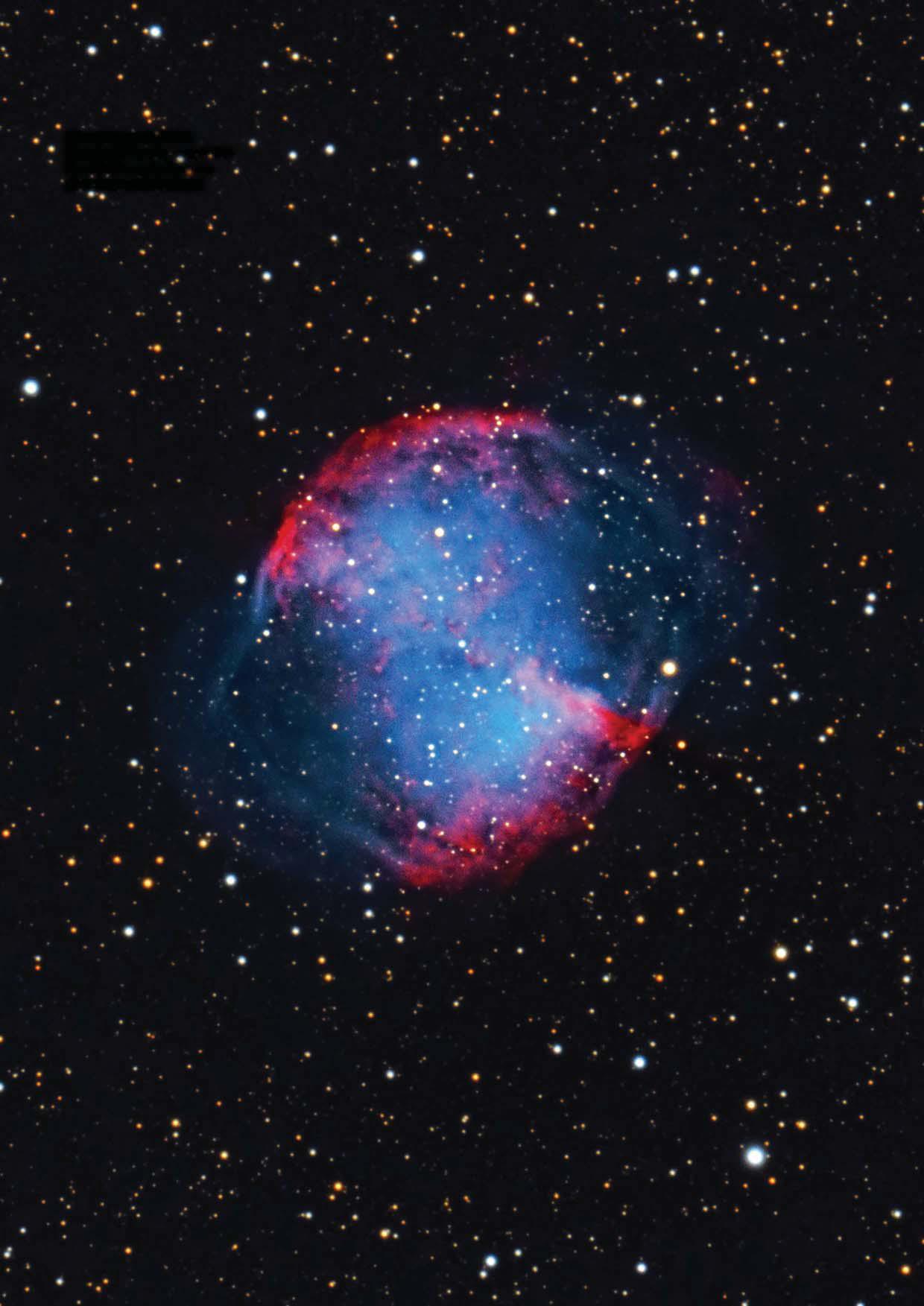
One of the most fascinating facts I ever learned about astronomy is that stars don't last forever: like us, they are born, live a life and eventually die. Okay, so those lives are rather longer than ours, but every single star in the sky is on borrowed time.
Thanks to science fiction, a common misconception is that all stars die in cataclysmic explosions, like the Death Star. The largest do, becoming supernovae that can briefly outshine a whole galaxy, while the smallest ones just shrink and fade away, like forgotten pop stars. In between, the quieter, less attention-seeking stars the size of our own Sun - that is, with diameters of a million kilometres or so - die like celestial souffles, swelling up and then shrinking again; but not before they pop, puff off their outer layers like colourful smoke rings and surround themselves with beautiful shells of gas and dust. Because through the eyepiece these shells have a resemblance to planets, they are known as planetary nebulae'.
Planetary nebulae are important scientifically because they allow us to study the evolutionary processes of stars similar to our own Sun, and see into its future. By studying them at different wavelengths, we can explore the amount and composition of the dust and gas inside their shells, allowing us to understand better what stars are made of. It's even possible to watch the material inside a planetary nebula's shells expanding, by taking multiple images over long periods of time and comparing them. We won't be around to see what happens to the Sun as it nears the end of its life, but studying planetary nebulae allows us to jump in a TARDIS and travel into the future to do just that.
Keep it dark
هذه القصة مأخوذة من طبعة August 2022 من BBC Sky at Night Magazine.
ابدأ النسخة التجريبية المجانية من Magzter GOLD لمدة 7 أيام للوصول إلى آلاف القصص المتميزة المنسقة وأكثر من 9,000 مجلة وصحيفة.
بالفعل مشترك ? تسجيل الدخول
هذه القصة مأخوذة من طبعة August 2022 من BBC Sky at Night Magazine.
ابدأ النسخة التجريبية المجانية من Magzter GOLD لمدة 7 أيام للوصول إلى آلاف القصص المتميزة المنسقة وأكثر من 9,000 مجلة وصحيفة.
بالفعل مشترك? تسجيل الدخول

Putting cosmic rays to work
These penetrating interstellar particles have applications from astronomy to archaeology

Set up your first imaging sequence
How to automate and coordinate your gear over multiple nights of imaging

The Universe without gravity
Life with no gravity might sound a fun idea, but as Govert Schilling explains, shutting off this pivotalforce would spell disaster for Earth and beyond

How to blend images taken with different camera setups
Combine data captured at varied focal lengths to create rich, deep images

INSIDE THE SKY AT NIGHT
Back in September 2021, The Sky at Night show spoke to Carly Howett about NASA's then upcoming Lucy mission. As the spacecraft now approaches its main targets - the Trojan asteroids - we check in with her to see how the mission is going

The science of SCI-FI
We love a good sci-fi film, but do they get the science right? Amy Arthur picks six of the big mistakes made in space films

Seeing in a new light
It's National Astronomy Week this month, so take a tip from Mark Westmoquette and let mindful stargazing change your perspective on your life and problems

What to do if you find a meteorite
Ever come across an unusual rock and wondered if it's a meteorite? Mark McIntyre explains how to tell if that stone really is a fragment from outer space

GEAR
Charlotte Daniels rounds up the latest astronomical accessories

Q&A WITH A STELLAR ECLIPSE SPECIALIST
Many stars are gravitationally locked inside multi-star systems, but a rare new triple-star system has set a new record for how cosy these clusters can get